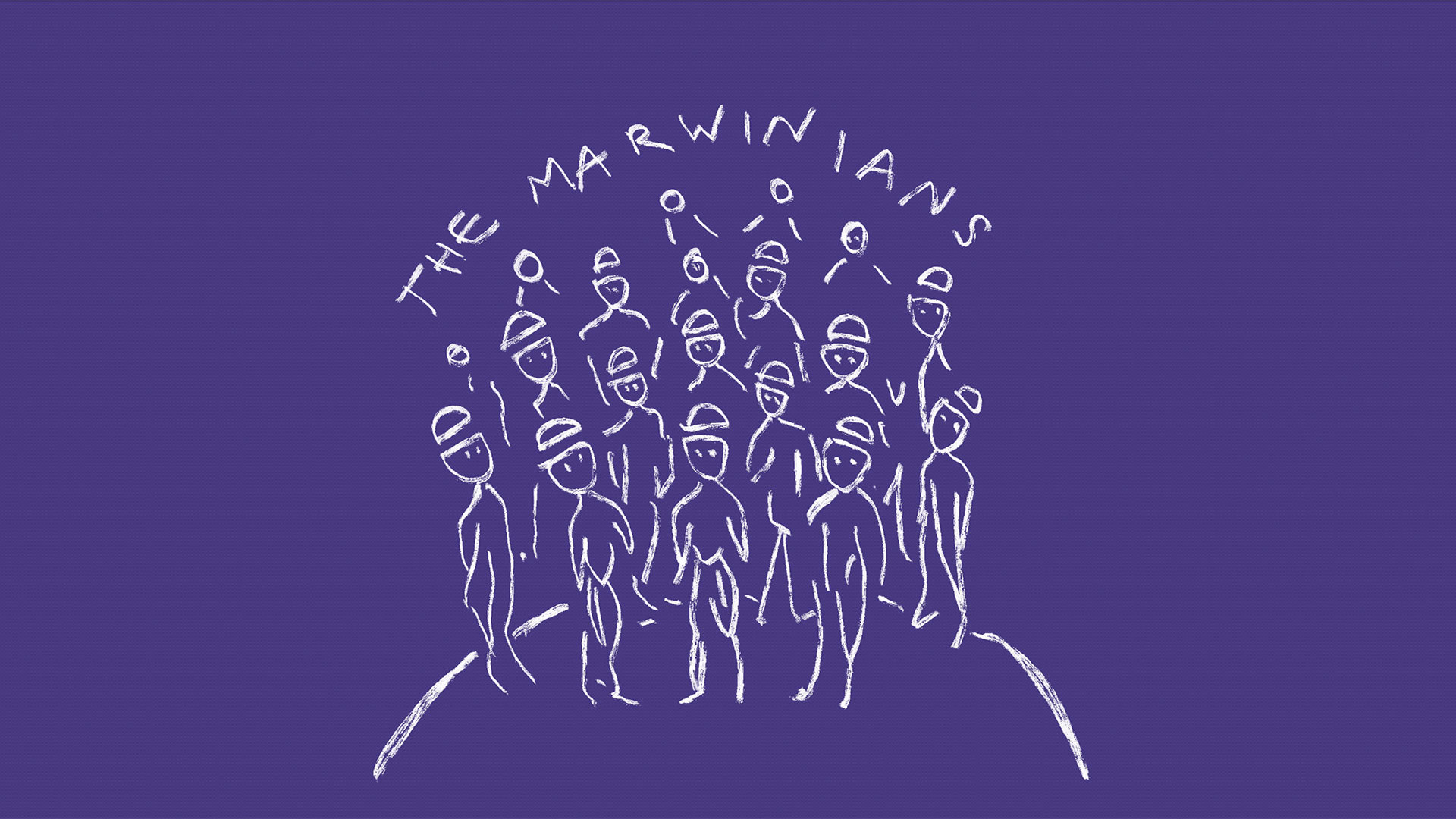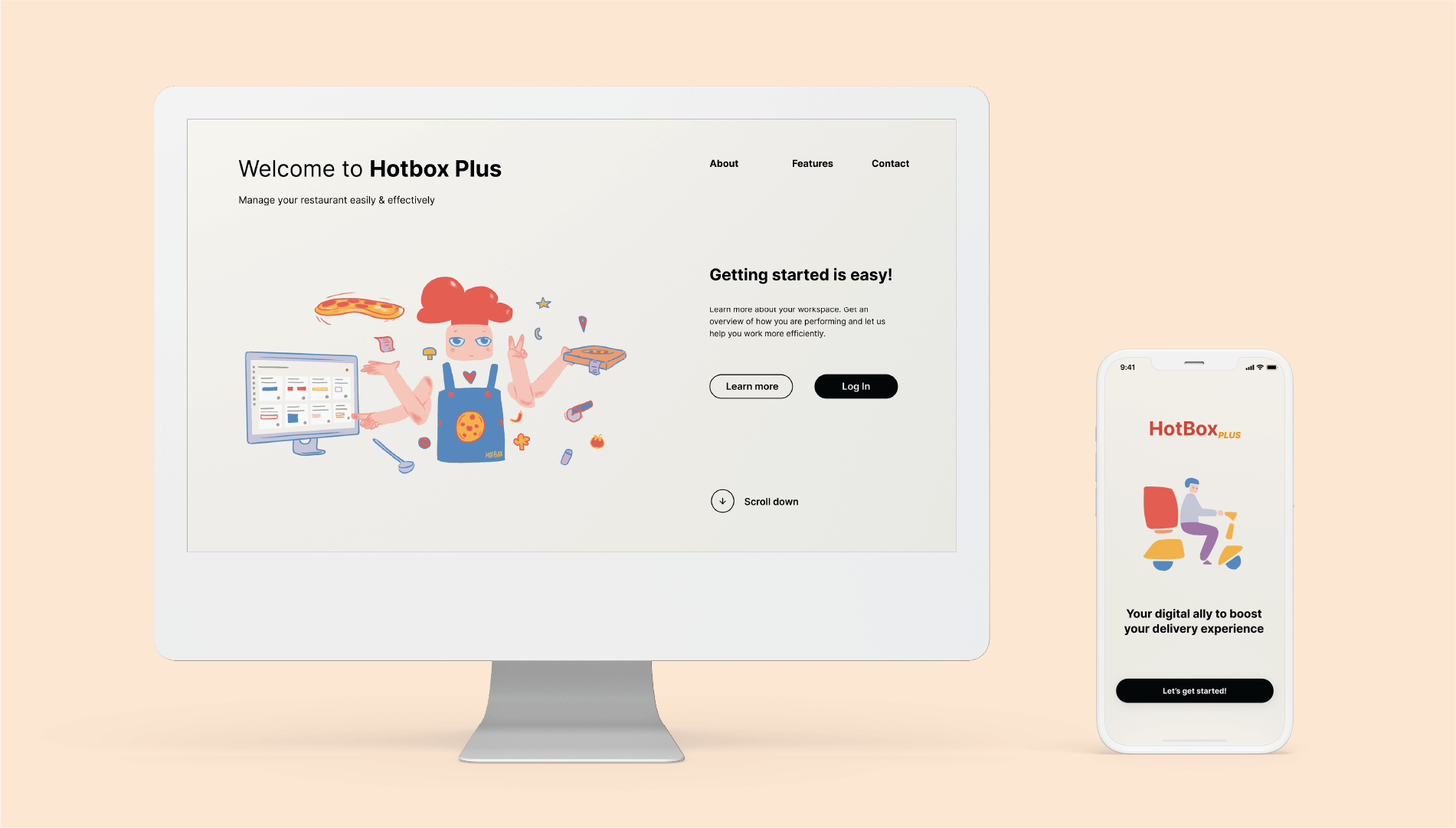
Introbots
A curiosity-driven project on introversion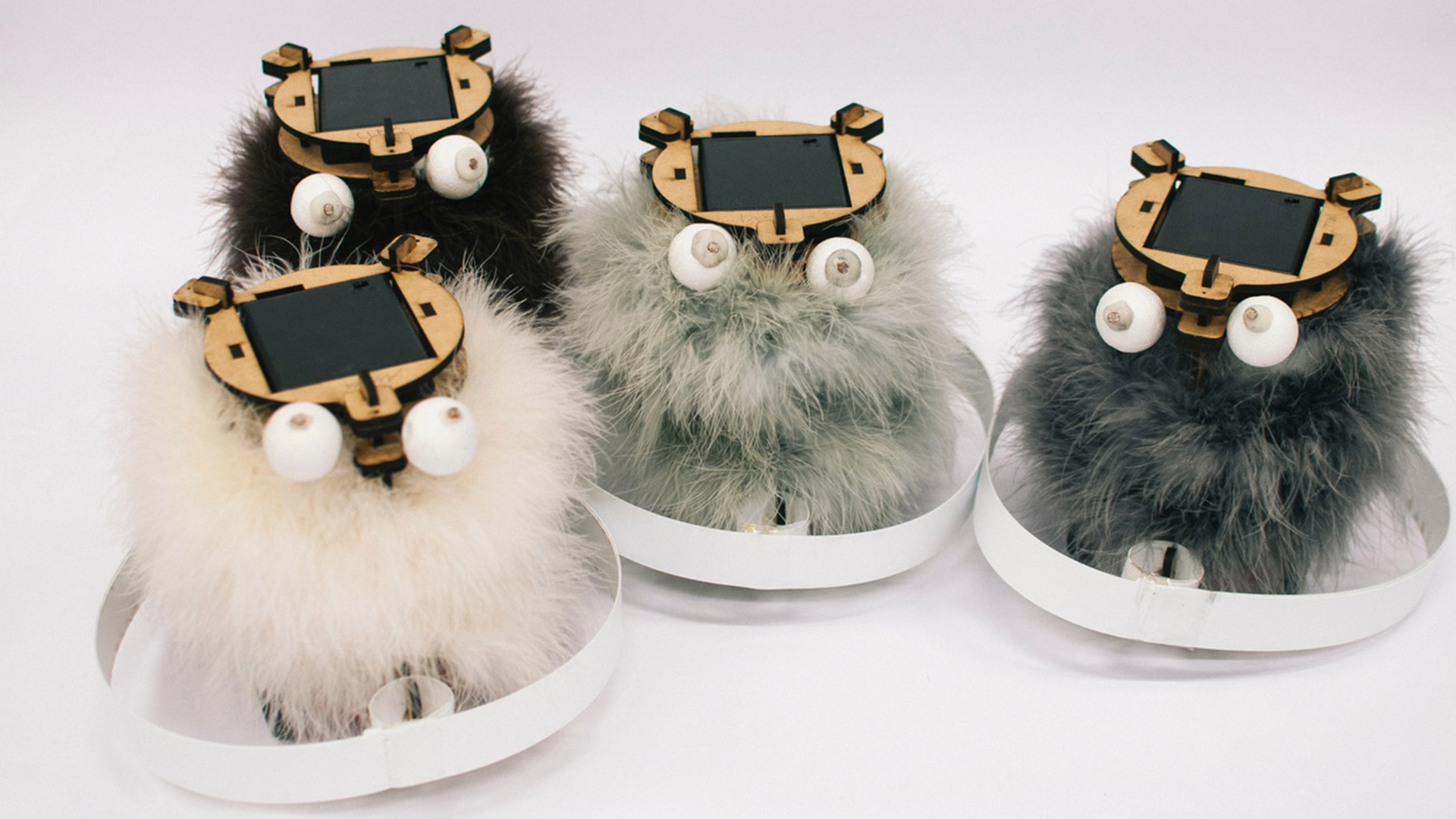
-
Client:
Internal (Interaction Engineering)
-
Team:
Adriaan Oudemans, Anandita Punj, Beatriz Ibeas, Carmen Scherbaum, Edwin D’Mello, Gabriela Prattingerová, Lena Heinrich
-
Disciplines:
Concept, UX/UI, Visual Design
-
Schoolyear:
2017 - 2018
Introbots have been created by the students of the Master's in Digital Design to reflect on introversion and its role in design education.
The challenge
Today, an extroverted character is a plus: people are asked to speak up in class, to discuss, to feel comfortable in front of large groups of people. Does this mean that introverts are at a disadvantage? How does introversion feel like?
The Introbots project was born as an exploration and commentary on being an introvert. Can we understand something more about introversion by making a robot and playing with it? And can we use it to explain that experience to others?

Exploring introversion
Introbots are small robots equipped with an Arduino microcontroller, motors and wheels for navigation, two light sensors, and various LEDs. Also, they are designed to be cute, relatable, and a bit goofy, covered in fluffy fur and with big, bulging eyes.
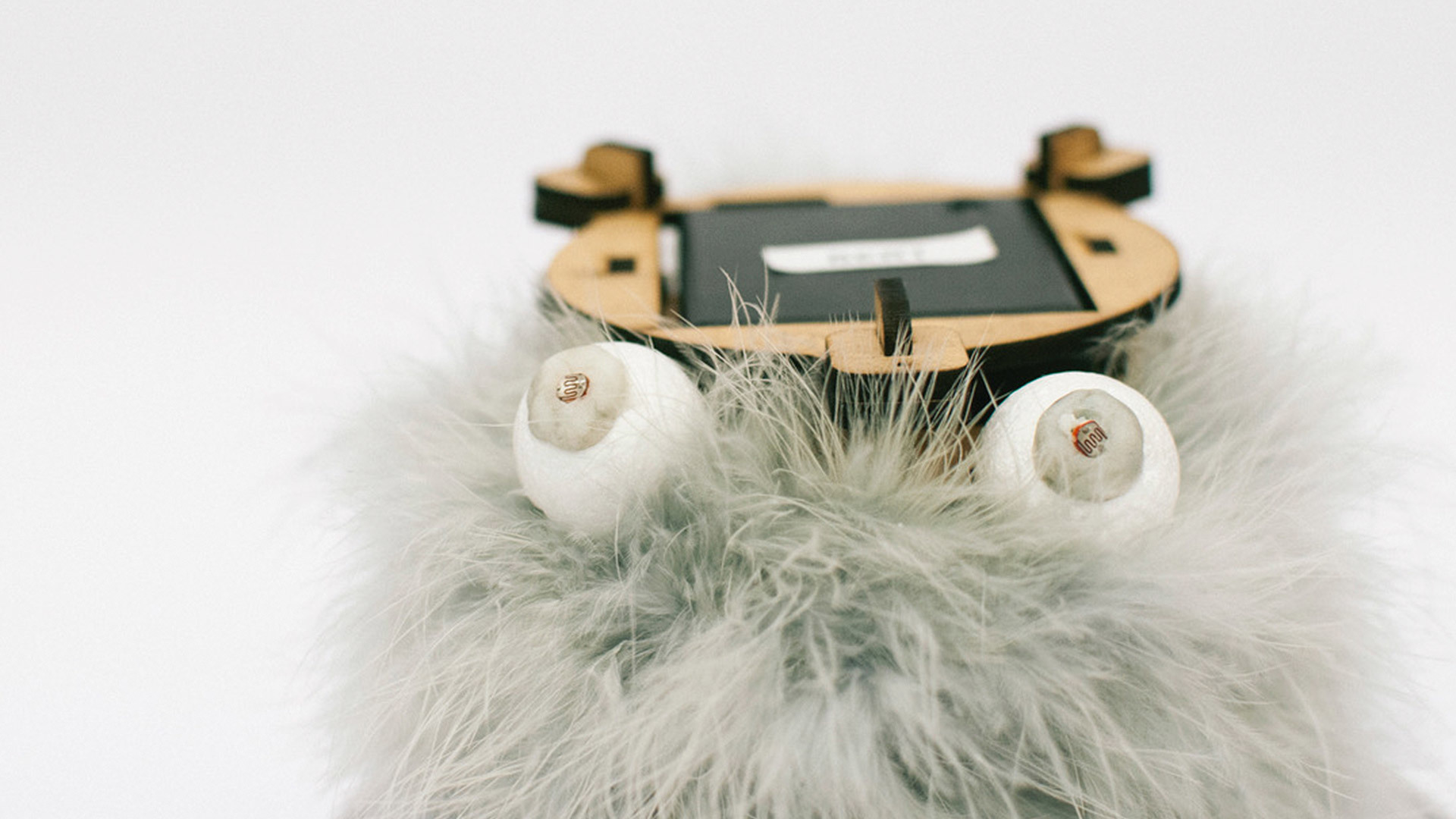
In the spotlight
Introbots find it really tiresome to be in the spotlight. They are more comfortable in dark spaces and tend to move away from bright lights. If they’re left in peace, their LEDs blink calmly. Vice versa, if they’re pushed too much into a bright space, they panic, and either spin or freeze. Just like all introverted people are different, each IntroBot has a different personality with different thresholds and resistance to stimuli.
A small game or performance is part of the Introbot experience: four participants are given a torchlight each, divided into teams of two, and led into a dark room. Four robots are waiting there, a pair for each side of the space. Their LEDs are glowing as if they’re relaxing and chatting with one another. Players are told that the objective of the game is to bring the Introbots to the center of the room, but this is much more difficult than it seems: the robots are scared of lights, they often run away, they get confused by the shadows and by the other players’ torches. And sometimes they panic and start spinning in random directions.
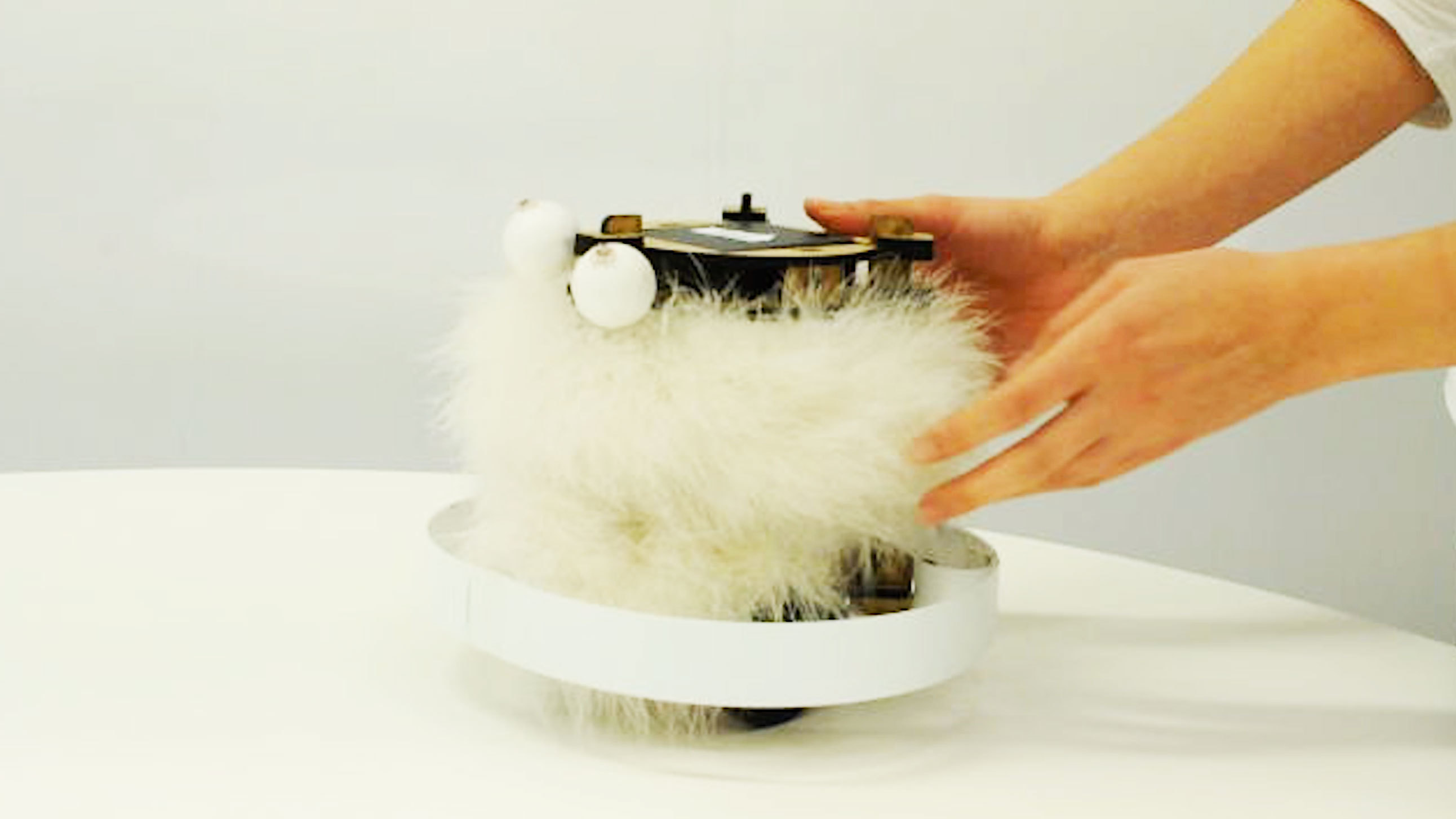
Playing with the Introbots: watch the process of making the Introbots
The duality of introversion
Students reflected on the duality of introversion: on one hand, the cute robots aim at raising empathy and affection in the players and, on the other hand, the game signifies how tiresome it may be for introverts to function in everyday circumstances. The Introbots are neither shy or lonely: indeed, they start in pairs and end the game in a group in the middle - but find the process of getting there exhausting and sometimes anxiety-inducing. The Introbots don’t offer any “solution” and don’t judge. Instead, they invite educators and students to reflect on the misconception that extroversion is positive and introversion is a disadvantage.
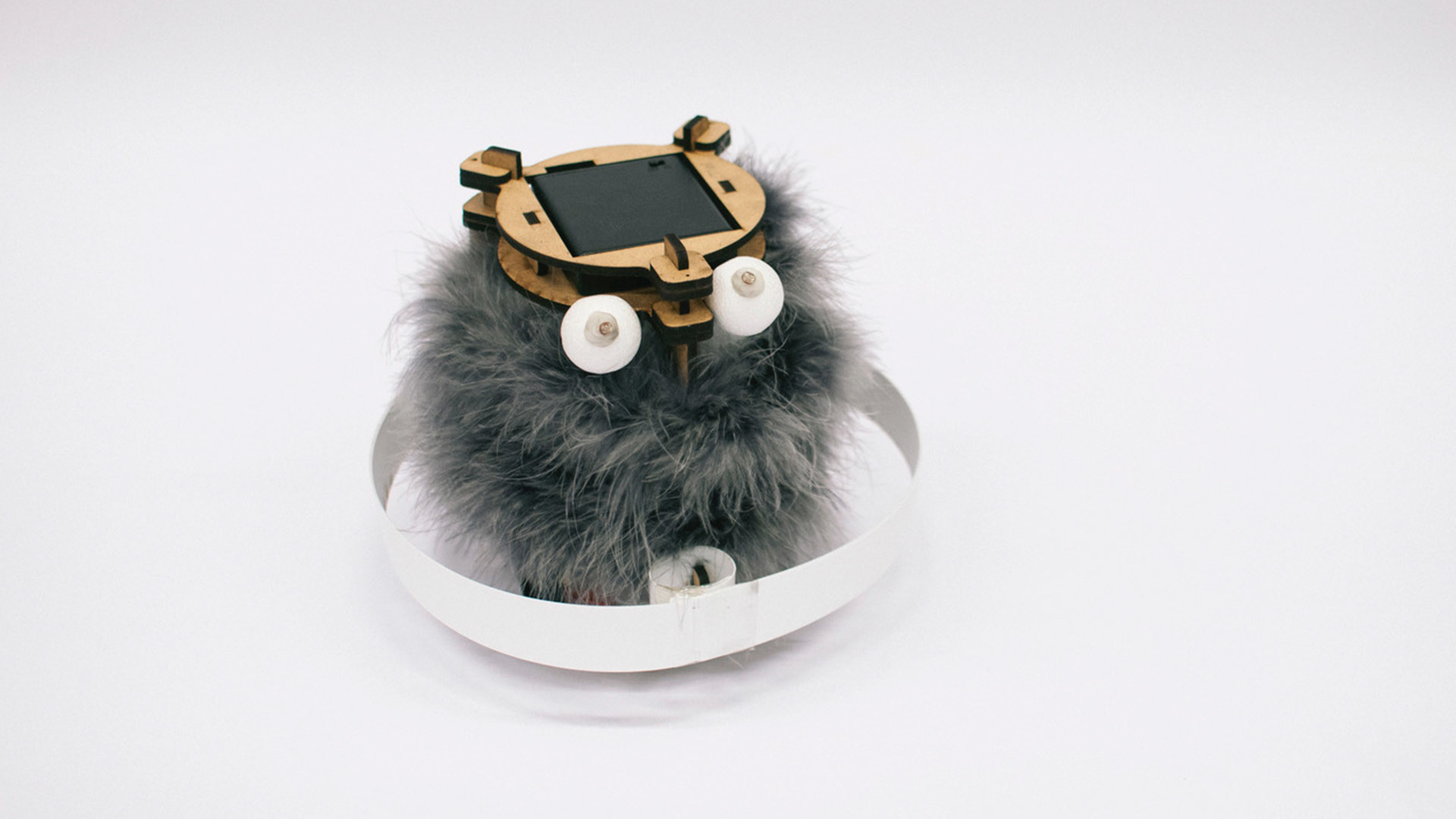
The result
While it has already reached its first milestone, the Introbots project is far from exhausted. Students have run a series of user tests, and data is currently analyzed towards a research paper (a first for the Master’s in Digital Design!). And we have recently learned that the Introbots have been invited to Favara (Agrigento), Italy, for a demonstration and workshop at SOU - School of Architecture for Children.
